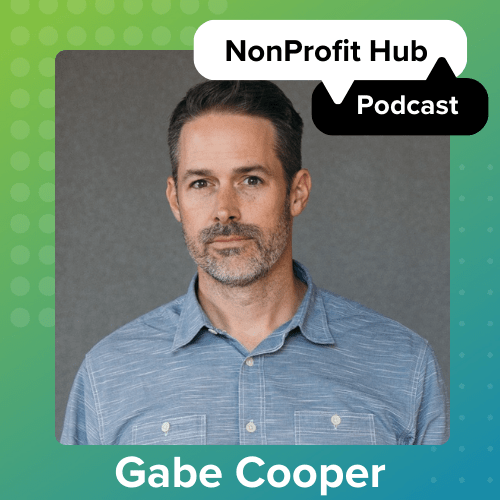As philanthropy and community engagement take center stage in the ever-changing world of non-profit organizations, product managers’ contributions are frequently overlooked. Their customer-centric attitude and strategic acumen, however, have tremendous potential to propel organizations to success and increase their social influence. By combining knowledge from conventional product development with the novel concept of social impact, let us explore the many ways in which product management helps non-profits.
Product management, what is it?
Finding problems, creating answers, and then making those ideas a reality are the three main tenets of product management. In the business sector, this could mean developing brand-new software. What this may include in the nonprofit sector is the creation of a brand-new educational program, social service, or fundraising initiative.
Making a Difference in Non-Profits: The Role of Product Managers
There are many crucial functions that product managers can carry out for charitable organizations. Their knowledge and experience can be invaluable in the following critical areas:
Comprehending User Requirements: An obsession with user needs analysis characterizes great product managers. This includes being aware of and responsive to the needs of the communities and individuals served by the nonprofit. Interviews and surveys are two methods that product managers use to learn about users’ wants, needs, and problems. Future projects and services can be better informed by this data.
Let’s pretend that low-income folks are the primary target of a nonprofit that specializes in job training. In order to learn about the target audience’s unique requirements, the product manager would undertake user research. One approach could be to conduct interviews with prospective customers to get information about their skills, experience, and aspirations for the future. Data on labor market trends would also be utilized by the product manager to identify in-demand talents. Using this information, we can design a job-readiness program that meets the specific demands of our demographic and the current employment climate.
Coming Up with Answers: Product managers can begin to create solutions if they have a firm grasp of user wants. This could entail coming up with fresh program concepts, making prototypes, and putting them through user testing.
Keeping with the job training example, a product manager may create a course that teaches students marketable skills like how to write a CV, conduct an interview, and get a job. After that, the product manager would design a training program prototype, which could include testing it out with a select group of customers. The training program would be fine-tuned based on the pilot program’s comments before being released to a larger audience.
Evaluation of Effects: It is the responsibility of product managers to assess the results of their efforts. This necessitates keeping tabs on critical performance indicators to assess the degree to which their offerings are satisfying consumers.
The job training program’s product manager may keep tabs on things like the percentage of clients who finish the program, the percentage of customers who secure employment after finishing, and the average salary of program graduates. The program’s efficacy and improvement opportunities could be better understood with this data.
Collaboration is essential.
Product managers must work together with program personnel, funders, and senior leadership, among others, to achieve success. Competencies in efficient project management, clear and concise communication, and consensus building are essential for product managers.
The success and efficiency of the job training program depends on the product manager’s ability to work in tandem with program instructors, career counselors, and job placement specialists. Additionally, the product manager is responsible for keeping the executive leadership and funders updated on the program’s status and outcomes.
How Non-Profits Can Benefit from Product Management
Many good things can come out of product management for nonprofits. Product managers can assist nonprofits in creating programs that better address the needs of the individuals they assist by adopting a user-centered approach to program creation. Better results and less wasteful use of resources are possible benefits of this.
Product managers are in a perpetual state of problem-solving nirvana. New, ground-breaking initiatives and services with far-reaching societal influence may emerge from such an endeavor.
Product managers can assist nonprofits in making data-driven decisions regarding their programs and services by collecting and evaluating relevant data. The result may be a shift toward more calculated moves.
Researching Users: The Bedrock of Effective Solutions
To make a difference, nonprofit product managers must first have an intimate familiarity with the people they are trying to help. Although they are useful, traditional fundraising analytics miss several key factors. In order to create solutions that genuinely solve the problems experienced by the intended users, user research is essential.
Product managers working for charitable organizations can benefit from the following user research methods:
User interviews: Product managers can learn a lot about the problems, goals, and ideal solutions via in-depth talks with those who will be using the product.
Conducting user interviews with children, parents, and instructors is one strategy that a non-profit organization implementing after-school STEM programs could employ. Students’ inability to do program assignments at home may be due to a lack of access to computers or internet connectivity, as revealed through interviews. Parents may express a need for additional experiential learning opportunities during interviews. Curriculum development and guaranteeing fair access to program resources would both benefit greatly from this data.
Product managers can have a better grasp of the general wants and requirements of a target market by analyzing quantitative data obtained from surveys.
As an example, the same nonprofit that provides STEM programs may survey the target audience to determine the level of interest in robotics and coding, two specific STEM professions. By analyzing survey responses, program offerings and marketing materials can be fine-tuned to better connect with the intended audience.
Effective Prioritization and Strategic Planning
Following the collection of extensive user data, the product manager is next tasked with prioritizing initiatives according to their prospective impact and the available resources. In the context of nonprofits,
Impact Mapping is a visual tool that product managers can use to outline the goals of beneficiaries, the actions that will bring about those goals, and the metrics that will be used to measure success.
To illustrate their mission of reducing plastic waste in a particular town, an environmental nonprofit may utilize impact mapping.
Partnerships with local companies to promote sustainable packaging, educational seminars, and community clean-up initiatives are all possibilities for activities. Workshop attendance, trash collected during clean-ups, and the percentage of customers who buy less single-use plastic bags are all possible indicators of success.
Product Roadmap – A long-term strategy outlining the creation and rollout of projects in a logical order according to their importance and expected effect. User feedback and continuous data analysis should allow the roadmap to be fluid and adaptable.
Continuing with the plastic waste reduction example, the product roadmap’s first stage may center on awareness-raising instructional programs. Community clean-up events and partnerships with local businesses might be included in subsequent phases, with each phase’s efficacy being evaluated before going on to the next.
Product managers at nonprofits allocate funds to initiatives with the highest potential for good by prioritizing them and creating a product roadmap according to user demands and impact.
Constructing Solutions with an Emphasis on Users in Non-Profits
Product managers can create effective solutions by applying user-centered design principles after priorities have been established. Some important factors to keep in mind are:
Regardless of technological or physical obstacles, all programs and services should be available to those who need them.
A mental health nonprofit, for instance, may create a smartphone app that connects users to local support groups and other useful resources. Accessibility features that promote diversity should be built into the app. These features should include compatibility with screen readers, closed captioning for videos, and numerous language options.
Solutions should be created to reach the maximum number of beneficiaries within the organization’s resources, ensuring scalability.
For pupils in rural locations with spotty internet service, a nonprofit that helps disadvantaged kids with their education may create a digital learning platform. For users to have continuous access to their favorite shows and movies, the platform might provide downloading material and offline features.
To summarize, by integrating insights from traditional product development with the innovative notion of social impact and conducting research to comprehend user requirements, organizations can create influential programs and services. The article examines how prioritization and roadmaps are informed by user research, thereby ensuring that resources are allocated to solutions that have the greatest potential for social impact. In conclusion, it places significant emphasis on user-centered design principles such as accessibility and scalability in order to optimize the scope and efficacy of these solutions.







